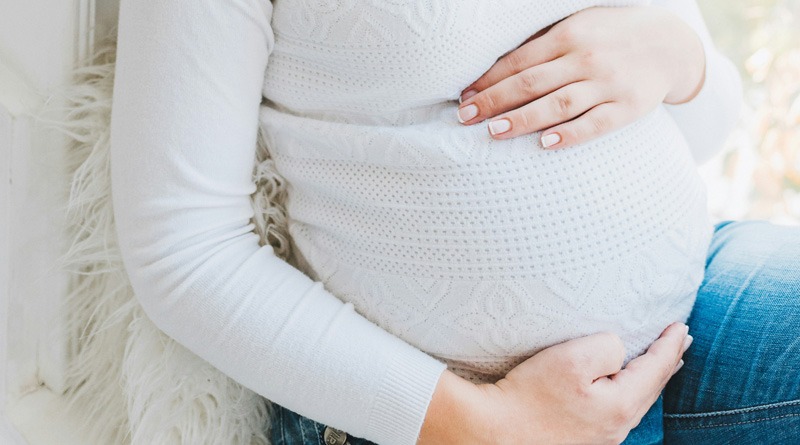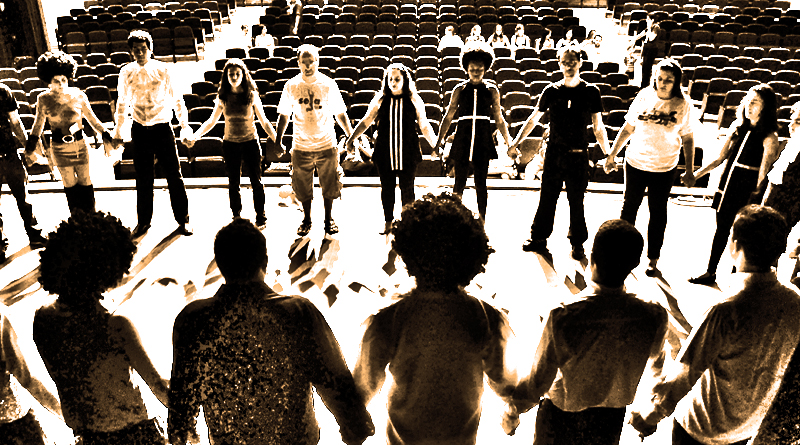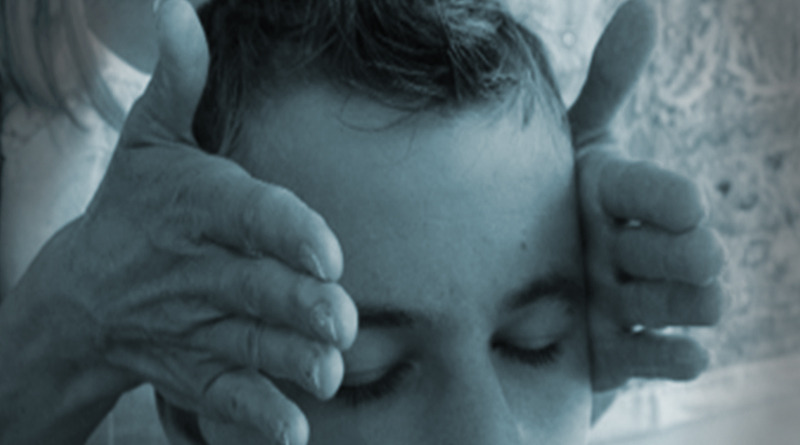
Hormones, Massage Therapy, and The Neurodiverse
By Giuliana Fenwick
As many of you will know, my work with the neurodiverse takes me to children and young adults, their families, staff and carers throughout the UK but also much further afield via talks and trainings. My work in schools and academies always keeps me fresh and in a constant state of learning and growing.
For many of these young people, they are hitting adolescence with all its growth spurts, complexities, changes and challenges. 70% of young people with autism spectrum “ disorders” in the UK, where I live, go to mainstream schools and this entails the unforgiving,one-size-fits-all mainstream exam system. For most “regular” kids this is such a vulnerable, confusing,difficult time anyway as they cope with all this whilst simultaneously growing into the adults they will become and discovering whom they are. Imagine having autism or another different ability on top of all that? Trying to discover your strengths, positives and gifts whilst coping with all these raging hormones and being defined or limited, often incorrectly, by a mainstream system, can be a purgatory. My own son, Ollie, is living proof of someone with autism who broke through those barriers and limitations, is now at his first choice university and touched people the world over as my linkedIn post about him received nearly 40,000 likes and comments of hope.It is possible to not just survive – but thrive – in a mainstream system and to educate those around us about having different abilities. We are never just labels.
This is where my therapy work within schools really reaps the benefits. Last time i explained to you about how my massage therapy brings the body down from “flight, fright or freeze”, to restful, relaxed and receptive. This time I’d like to expand on this further by showing you how certain massage techniques deeply help to fill the body and mind with wellbeing and the feeling of the ability to cope and function.
 The endocrine system is responsible for producing hormones and is made up of the hypothalamus, pituitary gland, pineal gland and the thyroid gland. Hormones act as the chemical messengers to and from the brain and control the rate at which the glands and other organs work.They control activities such as growth, mood, sexual reproduction,sleep, stress and aggression levels and the metabolism.
The endocrine system is responsible for producing hormones and is made up of the hypothalamus, pituitary gland, pineal gland and the thyroid gland. Hormones act as the chemical messengers to and from the brain and control the rate at which the glands and other organs work.They control activities such as growth, mood, sexual reproduction,sleep, stress and aggression levels and the metabolism.
When certain areas are massaged, the endocrine system is stimulated. The hypothalamus for instance, regulates the autonomic nervous system and the endocrine system by governing the pituitary gland. It controls hunger, thirst, body temperature, anger, mood, sleep and sexual behaviour as well as blood pressure,the heart rate, sweating and alertness.Dopamine, the pleasure hormone, is produced here.
The pituitary, also known as the master endocrine gland because its hormones stimulate and control the other glands to produce their own hormones, is stimulated through massage. Dopamine travels to and is stored here and serotonin, the happy hormone, is stimulated here. The pituitary helps regulate stress too by releasing cortisol into the adrenals.
The pineal secrets melatonin which helps regulate sleep patterns and influences mood.You see how kids need this ?!
The thyroid stimulates hormones linked to weight loss or gain and helps with energy levels,PMS, anxiety and poor memory, so again, the benefits of gentle stimulation to these areas through therapeutic massage,are wonderful.
Let me share a few tips to help get those hormones flowing beautifully!
Technique One: Neck Squeezing

To stimulate the thyroid gland, gently knead and squeeze the muscles at the back of the neck.Place one supportive hand on the forehead, tilting the neck slightly forwards, and with the other hand place your thumb on one side of the spinal cord and your fingers on the other side.Using firm, gentle contact, slide your hand upwards, squeezing and lifting the skin with your thumb and fingers together at the same time, all the way from the base of the neck up towards the hairline. Repeat several times, always starting at the base of the neck.
Technique Two: Temple Rotations
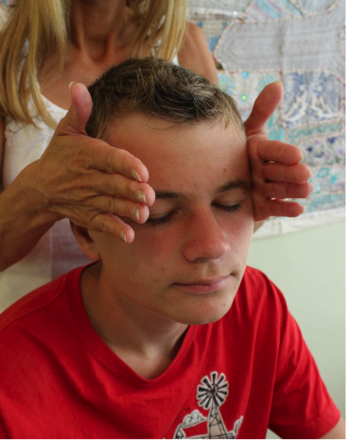
To stimulate the pituitary, you can do the temple rotations which i touched on in my last blog; place the warm palms of your hands over the tender temple areas and rotate forwards three times then backwards three times, really moving the skin gently but firmly. Repeat as often as the recipient would like.
Technique Three: Windscreen wipers!
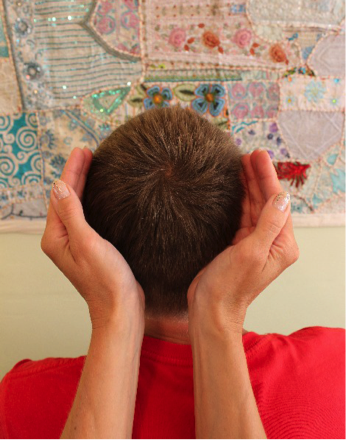
This step must not be done on anyone with epilepsy as it is very stimulating to the head.
Cupping your hands to face each other like two capital ‘C’s’, and using only the firm edges of each hand, move the hands towards each other in rapid ‘ in and outward ‘ movements, starting at the base of the skull ( the occiput ) and working upwards and outwards to cover the parietal an temporal lobes towards the crown and back down the centre of the head. The hands work towards each other and then away from each other like inverted windscreen wipers. Repeat at least three times. This stimulates dopamine, serotonin, melting and increases blood and oxygen to the brain thus stimulating concentration, clear thinking, memory and productivity.
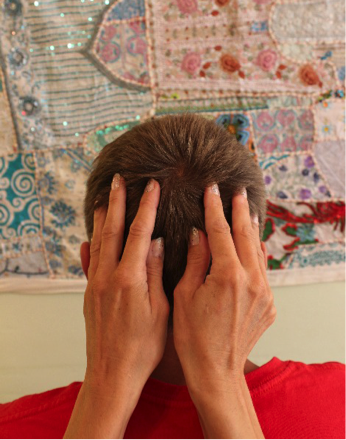
* You could repeat this same path by then using the index and middle fingers only, really moving the scalp, for maximum benefits.
Technique Four: Fingertip Rotations Across Forehead
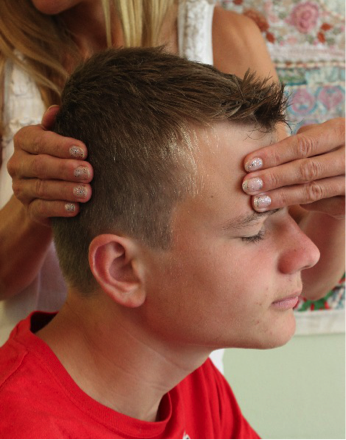
A lovely technique to stimulate the pineal and all its associated hormones to hep with sleep patterns, aggression levels, mood and growth, as well as stimulating all those executive brain functions i shared with you in my last blog, is to gently support the back of the head with one hand ( this area balances the left and right sides of the brain) and with the other hand, using the first three finger tips only, work in gentle, firm rotations from one temple, right across the whole forehead, to the other temple.Working again over the temples reaffirms previous stimulation to the pituitary hence flooding the client with a terrific sense of calm and well being once more, to finish.
Just watch the transformation before your very eyes of an exhausted, grumpy, cross teenager, especially one with different abilities, where they have so much more to contend with, into a relaxed, chilled and productive, focused, happy person! It’s a joy!
Giuliana Fenwick is an author (“Indian Head Massage for Special Needs” by Jessica Kingsley publishing, available from Amazon ) , a writer for various national and international publications and autism websites , a specialist therapist working extensively with children and young adults on the autism spectrum and with special needs , a teacher/trainer , fundraiser and international public speaker .
Most importantly she is a mother to a beautiful ,courageous , gifted autistic son, Ollie.
For more information, visit her website: www.therapiesforspecialneeds.co.uk

